Pedaling through Lucca’s ancient walls is like cycling back in time. I discovered this charming Italian town last summer when I rented a bike to explore its historic center. The entire circuit spans about 4 kilometers along the perfectly preserved medieval walls, offering stunning views of terracotta rooftops, medieval towers, and even the distant Apuan Alps on clear days.
What makes Lucca truly special is how its 16th-century walls have been transformed into one of Italy’s most enjoyable cycling paths. Unlike other walled cities where fortifications were demolished, Lucca maintained these historic structures and turned them into a tree-lined promenade perfect for biking. As I rode along, I passed locals walking dogs, families enjoying picnics, and fellow travelers soaking in the panoramic views.
For those feeling adventurous, the surrounding countryside offers longer routes of about 30 kilometers through the Piana di Lucca, with opportunities to visit local wineries. But even if you only have a few hours, the wall circuit provides a perfect introduction to this Tuscan gem.
The rental shops scattered throughout the historic center make it easy to grab a bike and start exploring at your own pace, with many providing maps for self-guided tours.

The Allure of Lucca’s Renaissance Walls
Lucca’s remarkable Renaissance walls represent one of Italy’s most complete ancient defense systems, now transformed into an elevated park perfect for cycling. These impressive 16th-century ramparts offer a unique perspective of both the historic city and the breathtaking surrounding landscapes.
Cycling the Ancient Ramparts
The 4-kilometer tree-lined circuit atop Lucca’s walls provides an incredible cycling experience unlike any other in Italy. I found the wide path perfect for casual riders, with plenty of room for passing pedestrians and other cyclists along the way.
The walls themselves tell a fascinating story. They built the walls between 1544 and 1650, and they were never breached in battle. Rental bikes are readily available from shops near the entrance points, making it easy to hop on and explore.
The path is mostly flat and well-maintained, ideal for all ages and skill levels. During my ride, I passed numerous locals using the walls for their daily exercise routines – a true living part of the city rather than just a tourist attraction.
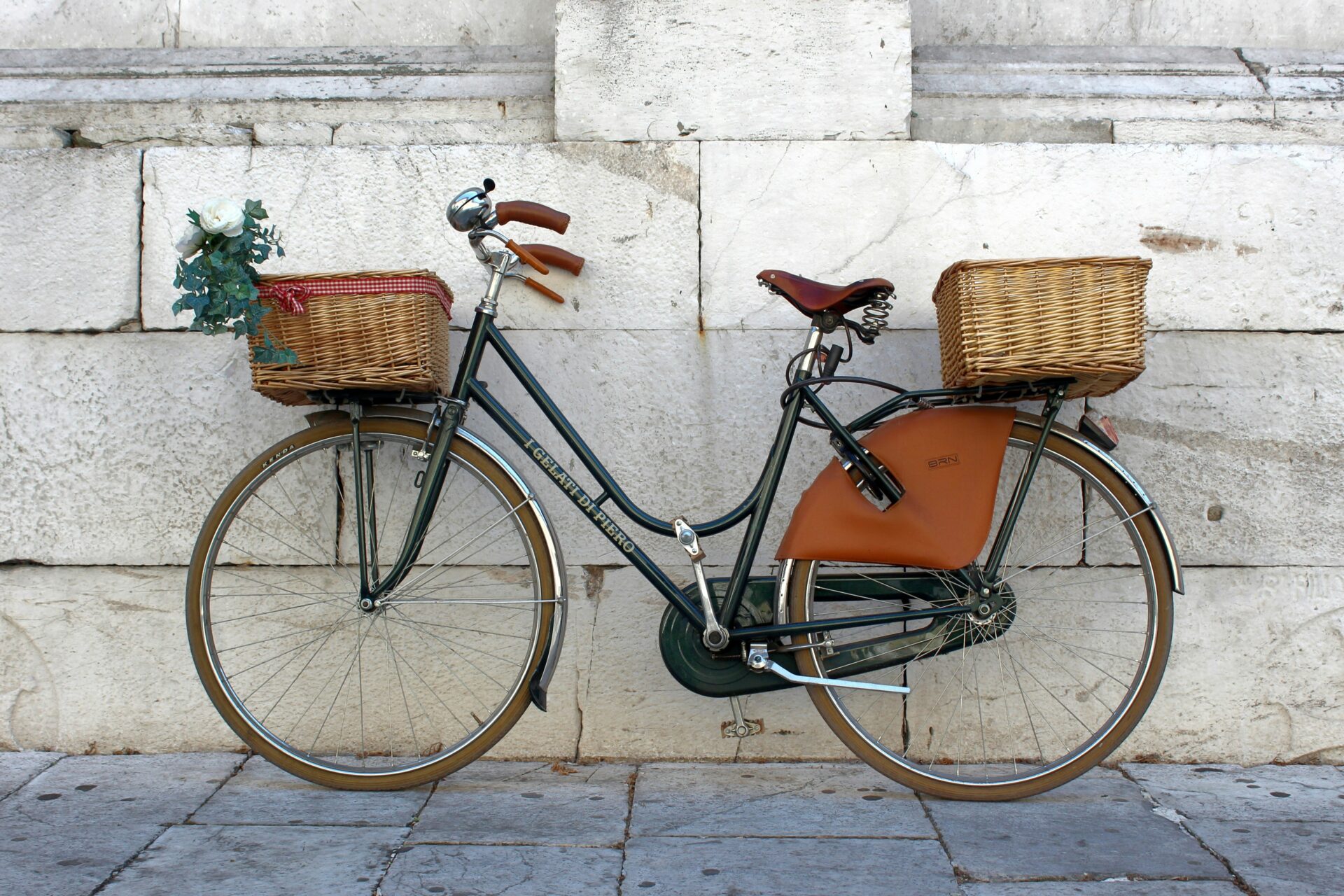
Views from the Top: Apuan Alps to Tuscan Coast
The elevated position of Lucca’s walls offers spectacular panoramic views in every direction. Looking outward, I could see the dramatic peaks of the Apuan Alps rising in the distance, their marble-rich slopes gleaming in the sunlight.
To the west, on clear days, you can actually glimpse the Tuscan coastline. The changing perspectives as you cycle provide a natural slideshow of Tuscany’s diverse landscape.
Inside the walls, the red-tiled rooftops of Lucca’s historic center create a captivating mosaic. I particularly enjoyed stopping at the northeastern corner where the view of the cathedral dome and tower is simply perfect.
Several cafés along the ramparts offer ideal rest stops to soak in these views. Early morning or late afternoon rides provide the most magical lighting for photographs and a less crowded experience.

Exploring the Heart of Lucca
Pedaling through the historic center of Lucca reveals a treasure trove of architectural wonders that tell the story of this Tuscan gem. The compact nature of the old town makes it perfect for exploration by bike, allowing you to glide effortlessly between centuries of history.
Cathedral of St. Martin’s Majestic Presence
The Cathedral of St. Martin (Duomo di San Martino) stands as the crowning jewel of Lucca’s religious architecture. I was immediately struck by its impressive façade with distinct tiers of ornate colonnades that draw the eye upward.
When I parked my bike in the square, I noticed how the asymmetrical design adds character rather than imperfection. The cathedral dates back to the 11th century, though much of what we see today was completed in the 14th century.
Inside, I discovered the tomb of Ilaria del Carretto, a masterpiece of Renaissance sculpture by Jacopo della Quercia. The cathedral also houses the Volto Santo (Holy Face), a wooden crucifix said to have been carved by Nicodemus himself.
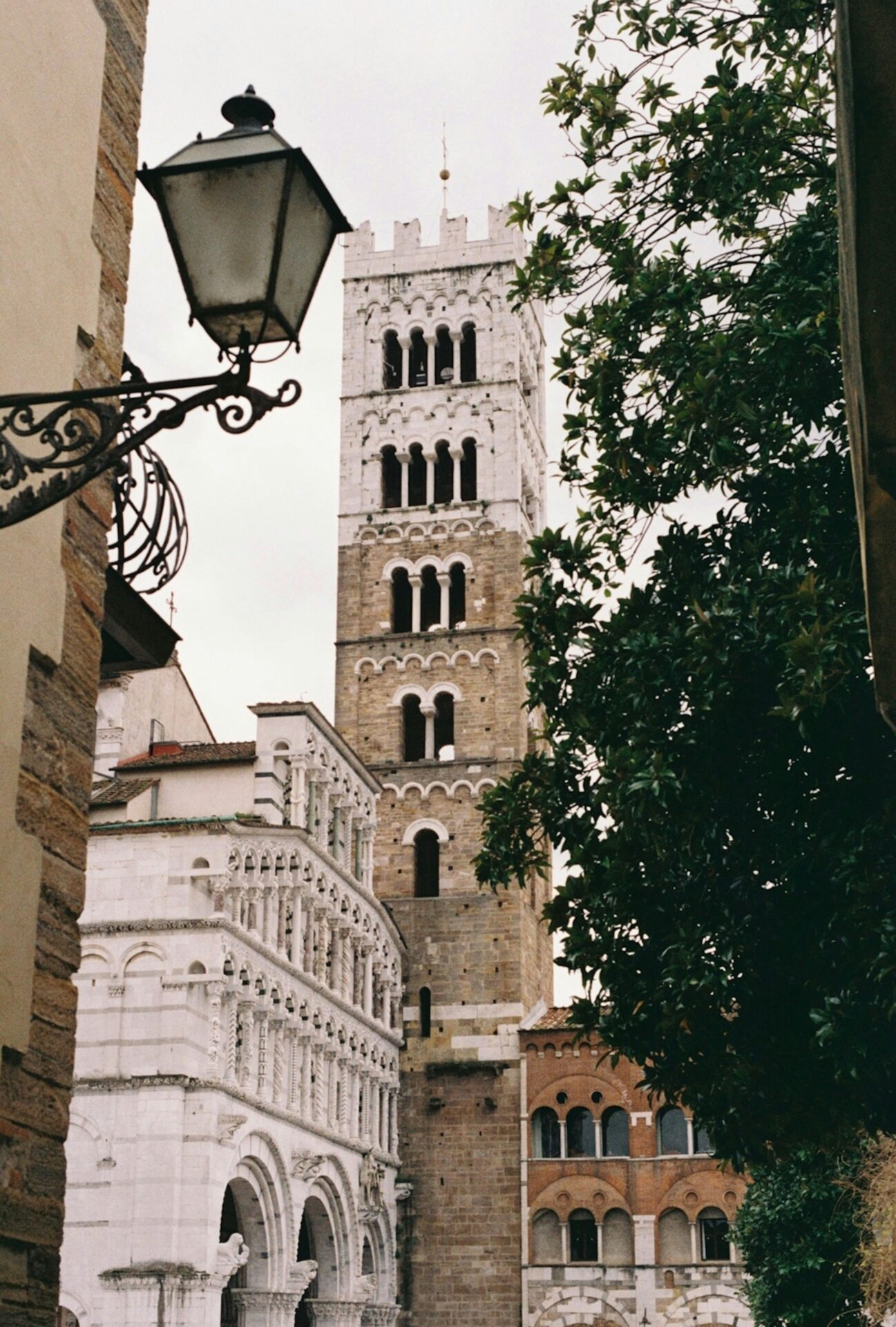
San Michele in Foro: A Testament to Time
Just a short bike ride from the cathedral, San Michele in Foro stands proudly in what was once the Roman forum. Its striking white marble façade rises dramatically above the surrounding buildings, creating a breathtaking sight as I approached.
The church’s top tier features a large statue of the Archangel Michael slaying a dragon. What fascinated me most were the different animal and human figures adorning the columns – each tells its own story.
Built between the 12th and 14th centuries, this church exemplifies the Pisan Romanesque style that defines much of Lucca’s architecture. The interior offers a peaceful contrast to the ornate exterior, with clean lines and beautiful artwork.
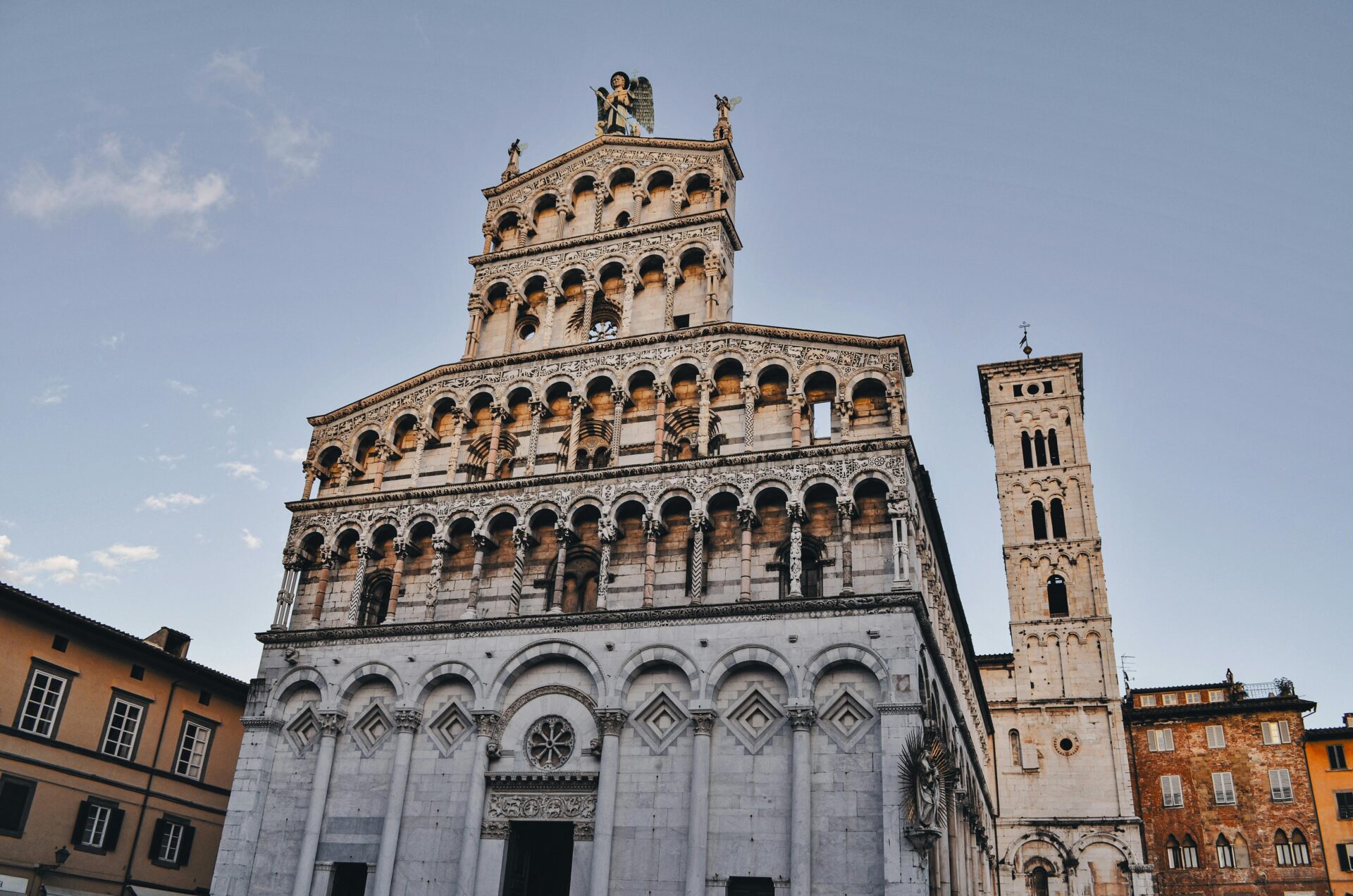
The Roman Footprint: Layers of History
Cycling along Via Fillungo brought me to Piazza dell’Anfiteatro, perhaps the most distinctive space in Lucca. This perfectly oval-shaped plaza follows the exact footprint of the ancient Roman amphitheater.
Medieval builders repurposed the Roman structure, incorporating its stones into new buildings that follow the oval outline. Today, colorful buildings in yellow and orange hues encircle the space, housing cafés and shops.
I found it fascinating to stand in the center and imagine the gladiatorial contests that once took place here. Now, it’s the perfect spot to take a break from cycling and enjoy a gelato or coffee while people-watching.
The layers of history are clearly visible throughout Lucca’s center. Roman grid streets still form the backbone of the city layout, while medieval towers and Renaissance palaces add to the rich historical tapestry that makes biking through Lucca such an unforgettable experience.

Lucca’s Towering Traditions
Lucca’s skyline is defined by its magnificent towers, remnants of the city’s powerful past. These stone sentinels offer visitors a chance to step back in time while enjoying stunning views of the red-tiled rooftops and surrounding countryside.
Guinigi Tower: Climbing to the Treetops
I was breathless after climbing the 230 steps of Guinigi Tower, but the effort was absolutely worth it. This 14th-century tower stands out in Lucca’s historic center with its unique rooftop garden of oak trees.
The tower was built by the wealthy Guinigi family, who ruled Lucca during the Renaissance period. They planted trees at the top as a symbol of rebirth and renewal.
When I reached the top, I found myself standing among centuries-old oak trees growing 125 feet above the ground! It’s truly a magical experience to walk among trees with the entire city spread below you.
The climb isn’t too difficult, with several landings where you can catch your breath. I’d recommend going early in the day to avoid crowds.
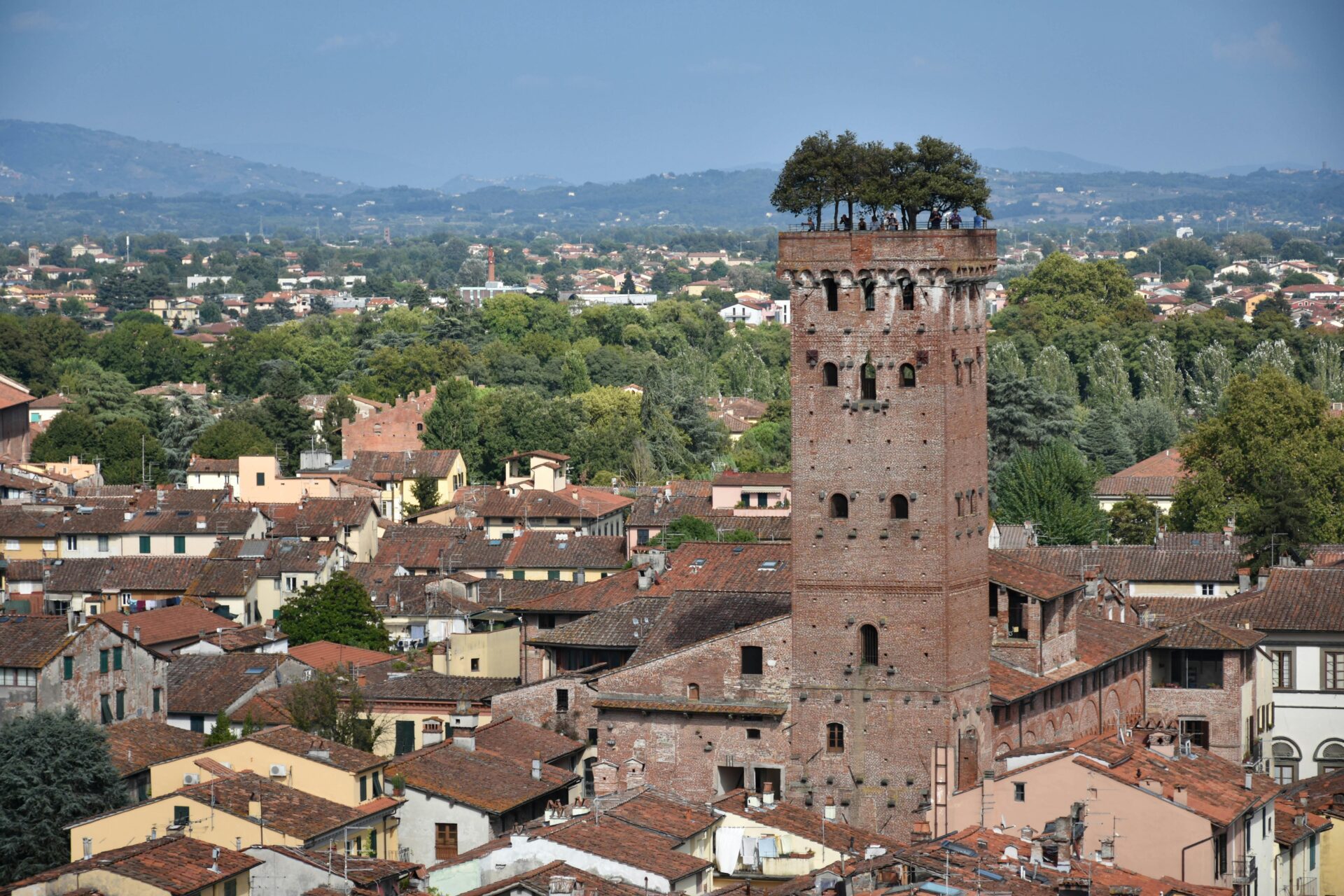
Torre Guinigi: A Panoramic Wonder
The panoramic views from Torre Guinigi are simply spectacular. I could see the entire walled city with its grid of narrow streets, church domes, and the oval-shaped Piazza dell’Anfiteatro.
On clear days, the vista extends to the Apuan Alps in the distance. The best time for photos is during the golden hour before sunset when the light bathes the red-tiled roofs in a warm glow.
From this vantage point, I gained a new appreciation for Lucca’s layout. The ancient walls form a perfect ring around the city, and the historic center’s medieval street pattern is clearly visible.
Don’t forget your camera! I spent nearly an hour at the top, taking in the 360-degree views and snapping photos of Lucca from every angle.
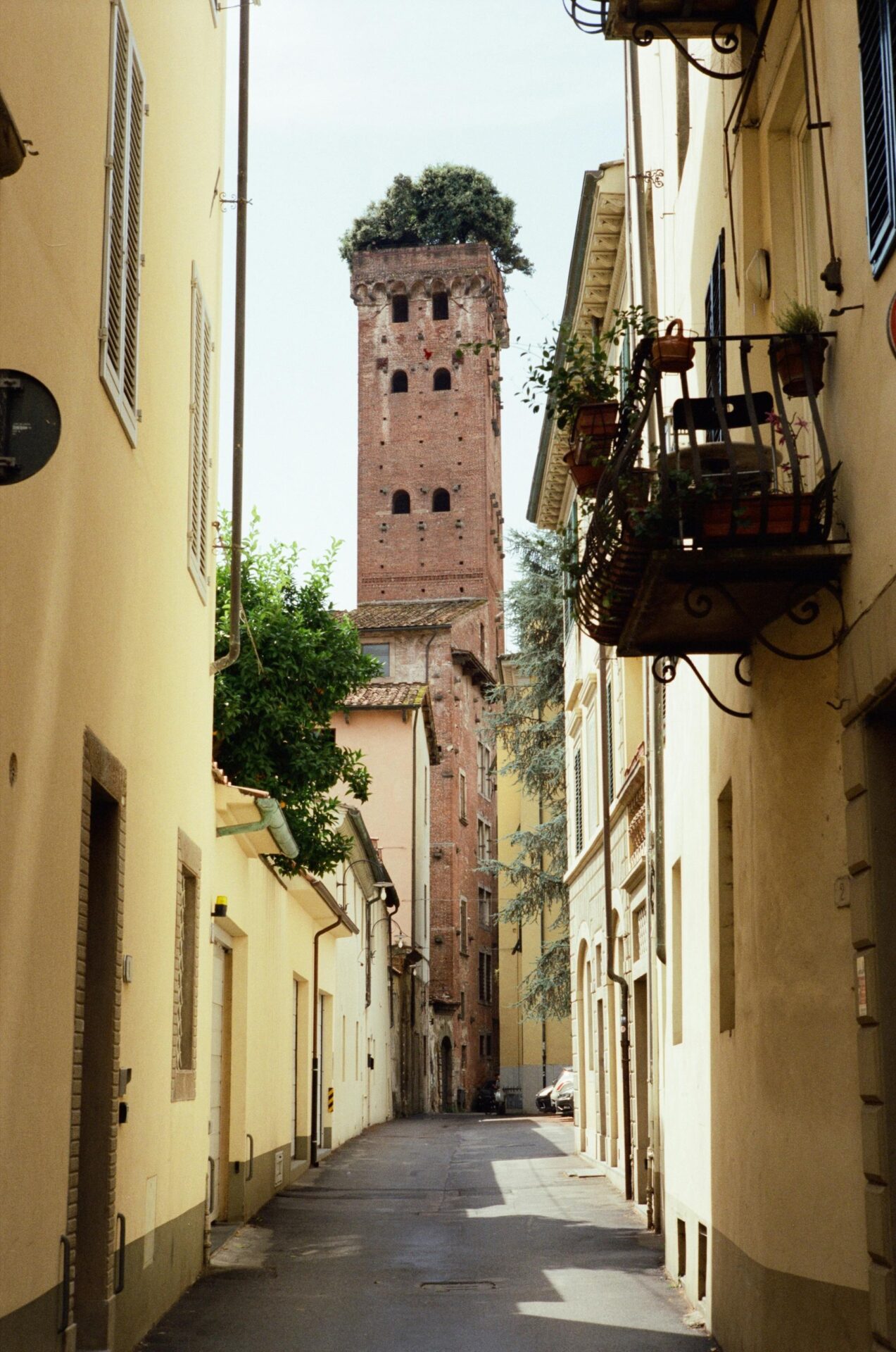
A Taste of Tuscany on Two Wheels
Cycling through Lucca offers more than just scenic views—it’s a journey for your taste buds too. The city’s food culture comes alive when you explore it by bike, letting you work up an appetite while discovering local delicacies.
Gelato Pit Stops: A Culinary Delight
After pedaling along the medieval walls, nothing refreshes like authentic Italian gelato. I discovered several charming gelaterias tucked away in Lucca’s narrow streets, perfect for quick cycling breaks.
My favorite stop is Gelateria Veneta near Piazza dell’Anfiteatro, where they make everything fresh daily. Their pistachio flavor uses real Sicilian nuts that taste nothing like the artificial versions I’ve had elsewhere.
When cycling in summer, I recommend planning your route with gelato shops as landmarks. The family-run Cremeria Opera offers unique flavors like honey-lavender that I couldn’t find anywhere else in Tuscany.
Pro tip: Most gelaterias offer small cups perfect for a quick energy boost before getting back on your bike.
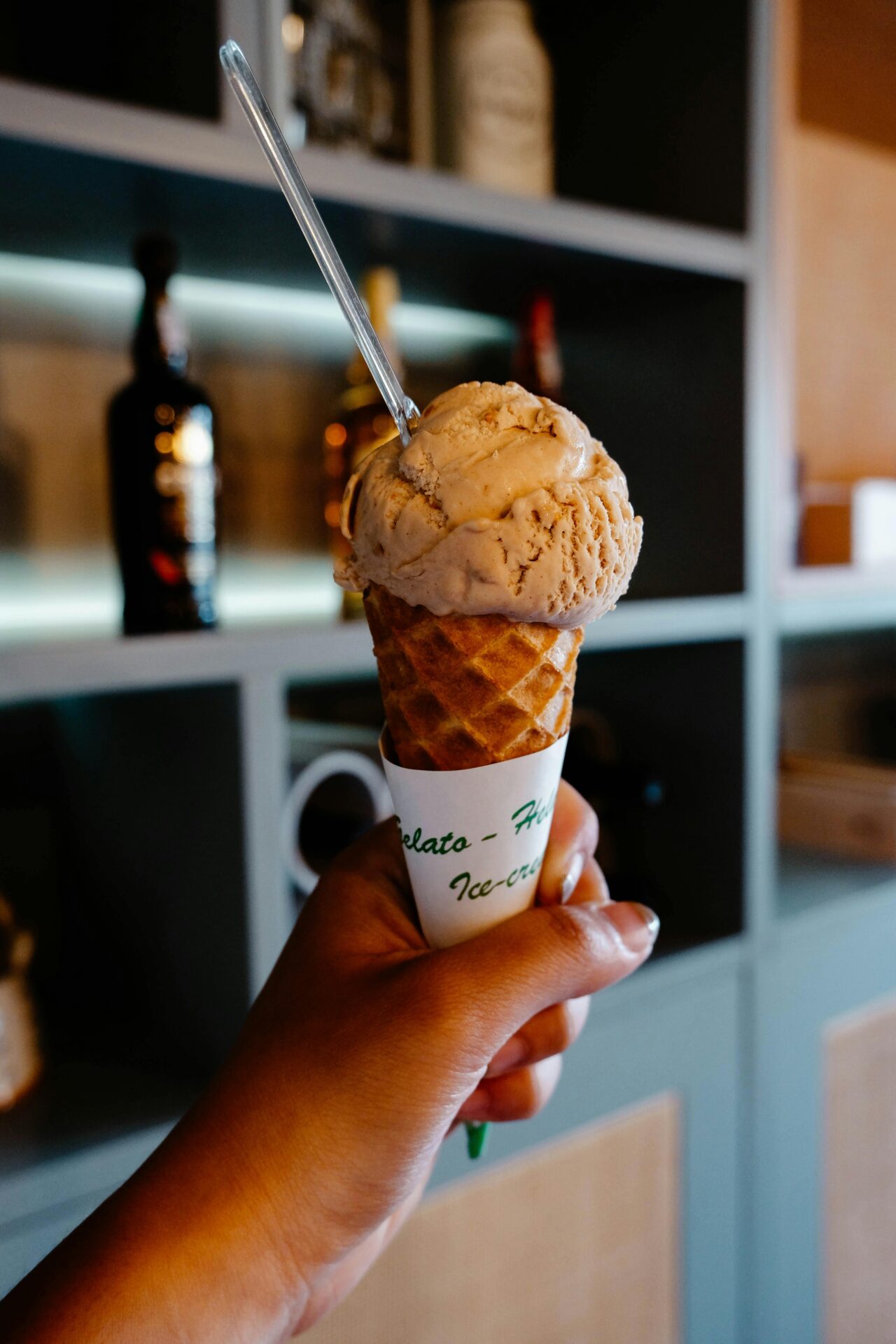
Buccellato: Lucca’s Famous Sweet Bread
No cycling tour of Lucca is complete without trying buccellato, the city’s traditional sweet bread. This ring-shaped treat filled with raisins and anise has fueled local cyclists for centuries.
I found the best buccellato at Pasticceria Taddeucci in Piazza San Michele, a bakery operating since 1881. The dense, slightly sweet bread makes an ideal cycling snack that fits easily in a bike basket or backpack.
What makes buccellato perfect for cycling adventures is its durability. Unlike other pastries, it doesn’t crumble easily when packed for a ride along the countryside.
During my bike tour around the walls, I stopped at a small bench overlooking the mountains and enjoyed buccellato with a thermos of coffee—an authentic Tuscan moment I won’t forget.
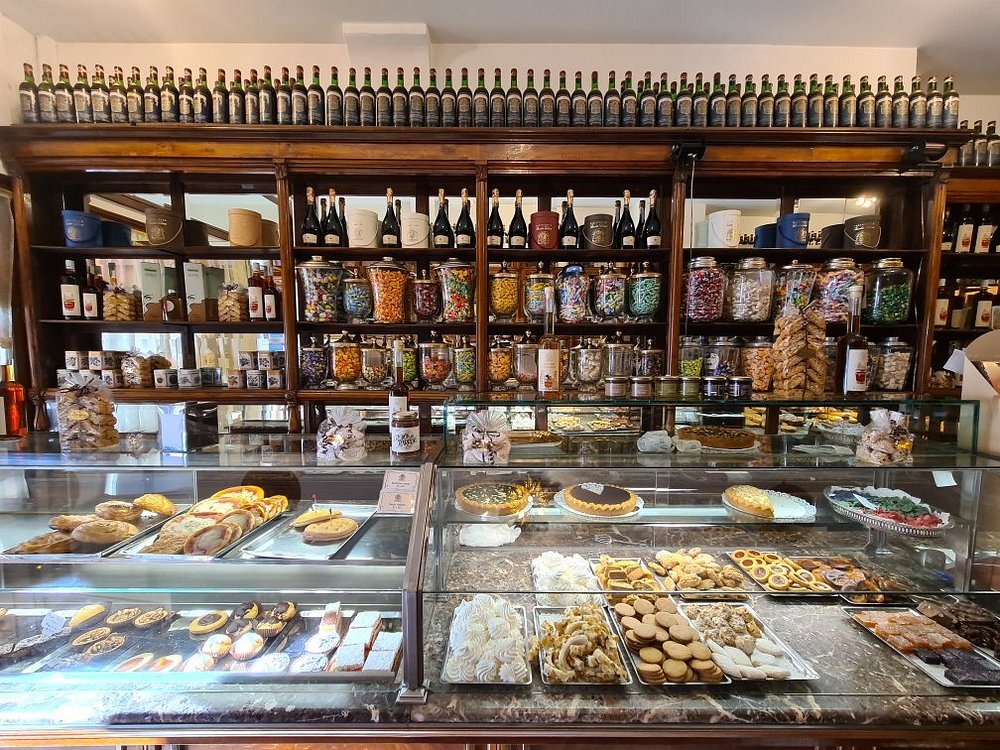
Green Spaces and Leisurely Places
Lucca offers stunning green retreats within its ancient walls where cyclists can pause and recharge. These peaceful spots provide perfect breaks during your bike tour around the city.
Botanical Gardens: A Lush Escape
The Botanical Garden of Lucca (Orto Botanico) is my favorite peaceful retreat from the bustling historic center. Founded in 1820, this hidden gem spans nearly 2 acres with over 200 plant species.
I love parking my bike at the entrance and wandering through the meticulously arranged flower beds. The medicinal herb section is particularly fascinating, displaying plants used for centuries in traditional remedies.
Don’t miss the stunning pond area with water lilies and small fish darting below the surface. The garden’s small greenhouse houses exotic plants that can’t survive Tuscany’s climate.
Entry fees are modest (around €4), and the garden is rarely crowded. I recommend visiting in late morning when the flowers are fully open but before the midday heat.

Family Fun: Playgrounds Within the Walls
Cycling Lucca with kids? You’ll find several charming playgrounds nestled along the city walls.
My top recommendation is the playground near Baluardo San Regolo. Here, children can play while you enjoy spectacular views.
The equipment is modern and well-maintained, with swings, slides, and climbing structures suitable for various ages. Shaded benches offer parents a comfortable spot to relax while keeping an eye on the little ones.
Another excellent option sits near Palazzo Pfanner, where the playground borders beautiful landscaped gardens. After some play time, you can take a short ride to the palace itself to admire its Baroque architecture and stunning water features.
Most playgrounds also have nearby water fountains. You can refill bottles before continuing your bike tour.
I suggest packing a small picnic to enjoy in these green spaces. It’s a perfect midday break during your cycling adventure.

